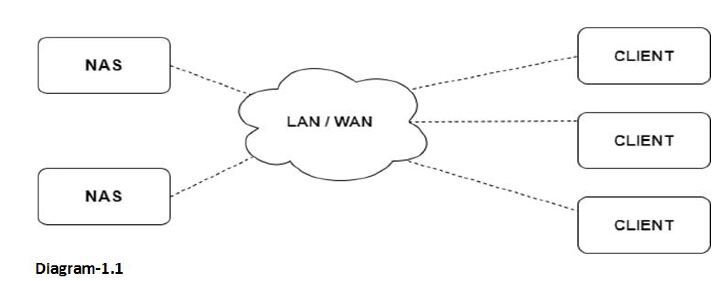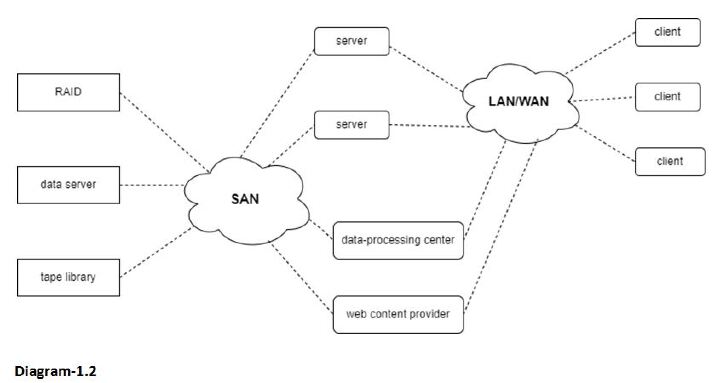
 Data Structure
Data Structure Networking
Networking RDBMS
RDBMS Operating System
Operating System Java
Java MS Excel
MS Excel iOS
iOS HTML
HTML CSS
CSS Android
Android Python
Python C Programming
C Programming C++
C++ C#
C# MongoDB
MongoDB MySQL
MySQL Javascript
Javascript PHP
PHP
- Selected Reading
- UPSC IAS Exams Notes
- Developer's Best Practices
- Questions and Answers
- Effective Resume Writing
- HR Interview Questions
- Computer Glossary
- Who is Who
Disk Attachment in OS
Disk attachment is the process of connecting a storage device, such as a hard disk drive or solid-state drive, to a computer system. This process is essential for the proper functioning of an operating system as it allows the system to read and write data to the storage device. Disk attachment can be either internal or external, and there are several methods of attachment, including SATA, SCSI, and SAS. In this article, we will explore the different types of disk attachments, methods of attachment, disk formatting and partitioning, and disk management.
Definition
Disk attachment refers to the process of physically connecting a storage device, such as a hard disk drive or solid-state drive, to a computer system. The purpose of disk attachment is to enable the computer system to read and write data to the storage device.
Types of disk attachment
Internal disk attachment
External disk attachment
Network Attached Storage
Storage Area Network
Internal disk attachment
Definition
Internal disk attachment refers to the process of connecting a storage device directly to the motherboard of a computer system. This type of attachment is typically used for storage devices that are intended to be permanent components of the computer system, such as the primary hard disk drive.
Advantages
Faster data transfer speeds ? Internal disk attachment provides faster data transfer speeds compared to external attachment methods, such as USB or FireWire.
Better power management ? Internal storage devices can be more easily managed by the operating system's power management features, allowing for more efficient power usage.
More secure ? Since internal storage devices are physically connected to the motherboard, they are less likely to be accidentally disconnected or removed.
Disadvantages
Limited expansion ? Internal disk attachment limits the number of storage devices that can be connected to a computer system. This can be problematic for users who require a large amount of storage space.
The difficulty of access ? Since internal storage devices are located inside the computer system, accessing them for upgrades or repairs can be more difficult and time-consuming.
Higher cost ? Internal storage devices can be more expensive than external devices due to their higher performance and reliability requirements.
External disk attachment
Definition
External disk attachment refers to the process of connecting a storage device to a computer system via an external port, such as USB, Thunderbolt, or FireWire. This type of attachment is typically used for storage devices that are intended to be portable, such as external hard drives or USB flash drives.
Advantages
Portability ? External storage devices can be easily transported and used on multiple computer systems, making them ideal for users who require access to their data on the go.
Ease of access ? External storage devices are located outside the computer system, making them easy to access for upgrades or repairs.
Expandability ? External storage devices can be easily added or removed from a computer system, allowing for more storage space as needed.
Disadvantages
Slower data transfer speeds ? External disk attachments typically provide slower data transfer speeds compared to internal attachment methods, such as SATA.
Limited power management ? External storage devices may not be as easily managed by the operating system's power management features, leading to less efficient power usage.
Less secure ? External storage devices can be accidentally disconnected or removed, leading to potential data loss or corruption.
Network Attached Storage
Definition
Network-attached storage (NAS) is a type of storage architecture where storage devices are connected to a network and provide file-level access to multiple clients or users. NAS devices are typically dedicated devices that contain one or more hard drives or solid-state drives, and they are connected to the network using standard Ethernet or Wi-Fi connections.
Advantages
Easy to set up and manage ? NAS devices are designed to be user-friendly, and they can be easily configured and managed using a web-based interface.
Cost-effective ? NAS devices are typically less expensive than other storage architectures, such as Storage Area Networks (SANs), and they can offer high-capacity storage for a relatively low cost.
Centralized storage ? NAS devices provide a centralized storage location that can be accessed by multiple users or devices on the network, which can be useful for sharing files and backing up data.
Disadvantages
Limited performance ? NAS devices may not offer the same level of performance as other storage architectures, such as SANs, especially for high-performance applications.
Limited scalability ? NAS devices may be limited in terms of scalability, especially for larger enterprise environments.
Network dependency ? NAS devices rely on network connectivity, which can be a potential point of failure or a bottleneck for storage access.

Storage Area Network
Definition
A Storage Area Network (SAN) is a specialized network that provides block-level access to storage devices, such as hard disk drives (HDDs), solid-state drives (SSDs), or tape libraries. SANs are designed to provide high-speed, low-latency storage access for servers or hosts, and they can be used to build complex storage infrastructures for enterprise data centers.
Advantage
SANs offer several advantages over other storage architectures. They can provide high-speed, lowlatency access to storage devices, which can be critical for high-performance applications such as databases or virtualized environments.
Disadvantage
SANs can also be complex and expensive to implement and maintain, and they may require specialized skills and expertise to configure and manage. They also require a dedicated network infrastructure, which can add to the overall cost and complexity of the storage infrastructure.

Disk attachment methods
SATA
Definition
Serial ATA (SATA) is a standard for connecting storage devices to a computer system. SATA uses a serial connection and is commonly used for connecting internal hard disk drives and solid-state drives.
Advantages
Faster data transfer speeds ? SATA provides faster data transfer speeds compared to older parallel ATA (PATA) standards.
Higher storage capacity ? SATA supports larger storage devices than PATA, allowing for more data to be stored on a single device.
Disadvantages
Limited cable length ? SATA cables are limited in length, which can be problematic for larger computer systems.
The limited number of devices ? SATA only supports a limited number of devices per controller, which can be problematic for users who require a large amount of storage space.
SCSI
Definition
Small Computer System Interface (SCSI) is a standard for connecting storage devices to a computer system. SCSI uses a parallel connection and is commonly used for connecting highperformance storage devices, such as hard disk drives and solid-state drives.
Advantages
High data transfer speeds ? SCSI provides high data transfer speeds compared to older standards, such as PATA.
Support for multiple devices ? SCSI supports a large number of devices per controller, making it ideal for users who require a large amount of storage space.
Disadvantages
Higher cost ? SCSI devices can be more expensive than other attachment methods due to their higher performance and reliability requirements.
Limited compatibility ? SCSI devices may not be compatible with all computer systems, which can be problematic for users who require a high-performance storage solution.
SAS
Definition
Serial Attached SCSI (SAS) is a standard for connecting storage devices to a computer system. SAS uses a serial connection and is commonly used for connecting high-performance storage devices, such as hard disk drives and solid-state drives.
Advantages
High data transfer speeds ? provides high data transfer speeds compared to older standards, such as PATA.
Support for multiple devices ? SAS supports a large number of devices per controller, making it ideal for users who require a large amount of storage space.
Disadvantages
Higher cost ? SAS devices can be more expensive than other attachment methods due to their higher performance and reliability requirements.
Limited compatibility ? SAS devices may not be compatible with all computer systems, which can be problematic for users who require a high-performance storage solution.
Importance of Disk Attachment in OS
Data storage ? Disk attachment is necessary for storing data on a computer system. Without disk attachments, it would be impossible to save files or install software on the computer.
Performance ? Disk attachment plays a critical role in system performance. Faster and more efficient disk attachment technologies, such as Serial Attached SCSI (SAS), can improve the speed and responsiveness of the system.
Scalability ? As data storage needs increase, disk attachment technologies provide scalability by allowing additional disks to be added to the system. This can be particularly important for businesses and organizations that need to store large amounts of data.
Redundancy ? Disk attachment technologies can provide redundancy and failover capabilities to ensure that data remains accessible even in the event of disk failure.
Data protection ? Disk attachment technologies can provide data protection features such as RAID (Redundant Array of Independent Disks) to protect against data loss due to disk failure.
Conclusion
In conclusion, disk attachment is critical for modern operating systems as it enables data storage, performance, scalability, redundancy, data protection, and flexibility. Different disk attachment methods and technologies offer advantages and disadvantages depending on the application or environment. The importance of disk attachment for efficient data management cannot be overstated, leading to better productivity and decision-making. Future advancements in disk attachment technology, such as faster and more efficient storage devices and protocols, will continue to enhance the performance and capabilities of modern operating systems.

